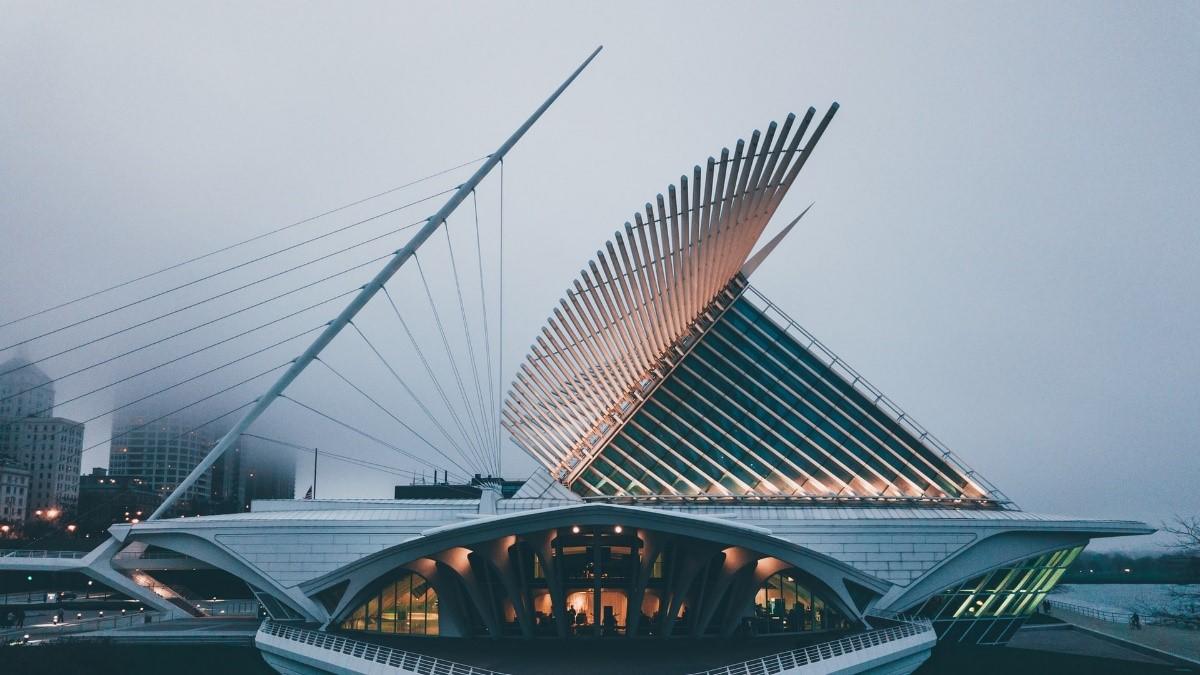German-Americans are residents of the U.S. 0f German descent or Germans who have acquired naturalized United States citizenship.
Such individuals have a dual identity, with the German language and culture ingrained in their customs.
German-Americans are the most common ancestry group in the United States who have self-reported, comprising over 49 million people and roughly 17% of the population.
Texas and California are both home to significant German-American communities. Many other states, on the other hand, have a unique German-American indigenous majority.
America has diverse cultures and co-exists together like citizens share Italian American history and have a dedicated Italian American history month.
The very first Germans arrived in the United States in 1608, settling in Virginia. However, it took another 75 years for many people to come and settle in places like Pennsylvania and New York.
Over time, immigration increased, and by the nineteenth century, over eight million German immigrants had arrived in the United States.
Emigration from Germany to the United States was motivated by various factors.
Some Germans immigrated to the new territory to seek political or religious liberties forbidden in their home country, while others simply wanted a new beginning.
Thousands of more German-Americans also enlisted to serve for the Union during the American Civil War, which lasted from 1861 to 1865.

Many of them were anti-slavery activists. German-Americans decided to adapt to American norms and learn English after several generations.
German-Americans started to make a significant impact on dominant American culture. Between 1860 and 1917, German was commonly spoken in American communities.
German settlers introduced the custom of putting up the Christmas tree in the U.S. in 1853.
Between 1931 and 1940, roughly 115,000 Germans immigrated to the United States. Many of the protestors were Jews or anti-Nazis who had to escape government brutality.
Albert Einstein, the Nobel Laureate, was the most well-known. President Franklin D. Roosevelt of the United States employed German-Americans to high positions in office during the war, including General Dwight D. Eisenhower.
Many German-Americans who immigrate to the United States nowadays are comparable to other Western European immigrants who are here for work or education.
According to the 1990 U.S. census, around 58 million Americans claim to be of German ancestry.
In addition, according to the Current Population Survey from 2005, German ancestors account for approximately 50 million people in the United States.
Approximately 1.5 million people in the United States speak German now.
Von Steuben Day, German-American Day, Oktoberfest are among the many German-American events held in the United States.
Every September, the German-American Steuben Parade in New York is a prominent event.
Annual celebrations are held in Lincoln Square, a popular gathering place for the German populace residing in the U.S., while Cincinnati hosts the world's biggest Oktoberfest outside of Germany.
Since the initial settlement of Germans in the United States, German-Americans have influenced every sector of life, from science, politics, education, entertainment, culture, and sport to industry and architecture.
Around eighty percent of Americans have European ethnic origin. Therefore, the celebration of Italian American history month, Polish American history month, and Irish American history month are pretty popular in the States.
Dwight Eisenhower (original surname Eisenhauer) and Herbert Hoover were two American presidents whose forefathers were German descent.
The twentieth century was a period of consolidation and growth for German Americans; their population expanded, and finances stabilized.
Also, German Americans gained several distinctions and influential positions.
On the other hand, the new century was a period of terrible defeats for German American culture—a catastrophic setback from which it has never made a full recovery.
With the outbreak of World War I, there was pushback in the United States against German culture.
Animosity against German Americans grew after the United States waged war on Germany in 1917, and German Americans were targeted.
Some prejudice was overt: foods, towns, streets, and names of schools were frequently changed.
Also, Mendelssohn's and Wagner's music was frequently eliminated from concert programs and even weddings. Physical assaults were more brutal, though they were infrequent.
German American businesses and residences were damaged, and German Americans suspected of being "pro-German" were feathered and branded, and in one case, lynched.

Shadows Of War
The most significant widespread devastation, however, was inflicted upon German education and language.
As a result, German-language newspapers were mainly forced to shut down their operations or decided to do so discreetly.
Books written in German were set ablaze, and Americans who studied German were subjected to violence or economic sanctions.
German language courses, which had been a prominent element of the public school curriculum until then, were phased out and, in some cases, forbidden outright.
President Woodrow Wilson was critical of "hyphenated Americans," whom he thought had split loyalties. "Every person must identify himself as American—or traitor," one government official said.
Numerous German Americans grappled with their emotions, understanding that their affections for their country seemed to clash with their commitment to the United States.
Some German Americans retaliated by openly professing their allegiance to the U.S.
Others altered the names of their enterprises and, in some cases, their own identities to hide their Germanic roots.
Thousands of German Americans fought in the war, despite Wilson's views on split loyalties.

German Americans' Contributions To The U.S.
German Americans are the biggest ethnic group recorded by the U.S. Census Bureau in its American Community Survey, with an estimated population of around 44 million in 2016.
The group makes up roughly one-third of the world's largest indigenous German population.
Between eastern Pennsylvania to the Oregon coast, a "German strip" runs the country's length.
Germantown (Philadelphia), established in 1683, had the biggest German-American population in the United States. 3.5 million Inhabitants of German origin live in Pennsylvania.
The first kindergartens in the United States were founded by German Americans, as was the Christmas tree tradition.
They also brought popular cuisine to America, including hamburgers, hot dogs, strudelager, beer pretzels, and sauerkraut.
German Americans have impacted nearly all American cultural aspects, including business, science, architecture, athletics, theology, the military, entertainment, theology, politics, and defense.

German Food In The United States
The German impact on American cuisine is largely unknown because it has existed for such a long time.
According to most estimates, around a quarter of the American public is of German ancestry. In addition, German restaurants were of a high culinary standard in most large cities.
However, even in predominantly German cities like St. Louis, Milwaukee, and Cincinnati, they are hard to come by.
Nonetheless, the frankfurter and the hamburger and various egg noodles, cured meats, sausages, and a plethora of other American meals have German origins.
Even the famous barbecue cuisine of central Texas, a region with significant German heritage, is influenced by German foodways.
Sauerbraten, a sweet and tangy pot roast, as well as sausages and sauerkraut and the knackwurst (commonly called knockwurst), leberwurst (or liverwurst), and the ubiquitous bratwurst, all keep their German names.
Whether or not they are of German ancestry, Americans are at ease with these phrases.
The most famous type of beer in the whole world and the United States is lager, introduced to the world by German immigrants.
It was first consumed in large quantities by German-Americans and was popularized among the general public by "beer barons" like Schlitz, Pabst, Stroh, and Busch.
Beck's is the most popular imported German beer from Bremen in northern Germany, accounting for more than 60% of all German beer sold in the United States.
Building Institutions, Affecting Tastes
The American educational system would be unrecognizable without concepts advocated by German immigrants, from the highest grades to the lowest.
German culture has always nurtured a profound devotion to education, and Germans took that drive to their new country with them.
In 1855, German settlers in Wisconsin established the first preschool in the United States, modeled after German kindergartens.
Germans were solely accountable for incorporating fitness centers in educational facilities and introducing vocational and physical education into public schools.
More importantly, they were pioneers in the quest for universal education, a concept that most people in the U.S. didn't accept at the time.
German immigrants also carried their reformist fervor to America's recreational activities— it's even been said that they founded the German weekend.
Many communities in American colonies celebrated a Puritan Sabbath before the arrival of the Germans, with an emphasis on relaxation and dedicated time at home with the family.
On the other hand, Germans had a long history of organized Sunday leisure and were ardent supporters of Sunday excursions.
Bandstands, sports clubs, playgrounds, music halls, picnic areas, bowling alleys, music halls, and, all suited for a weekend getaway with the family, started to sprout in American towns after the entrance of German immigrants.
Singing organizations, theater lodges, and groups were all popular among Germans.
Practices that many consider inherently American as if they had existed from the beginning of time were either adopted or popularized by German settlers in the nineteenth century.
Many of the most well-known aspects of American holidays, like the gift-giving Santa Claus and the Easter bunny, were contributions from the Germans.
German American Music
The Moravian Church Settlements of Bethlehem, Nazareth, and Lititz were dominated by the German-speaking in Pennsylvania and Wachovia in North Carolina, had highly developed musical traditions beginning in 1741.
Brass and string music, choral music, congregational singing, and choral music were all heavily promoted. Many composers and musicians came from the Moravian Church.
In the early nineteenth century, Bethlehem hosted the premiere of Haydn's Creation. In addition, the Imperial government in Berlin supported German culture, particularly music, in the United States.
The reception of German music in the United States was boosted by a continual influx of German-born conductors, such as Arthur Nikisch and Karl Muck.
In contrast, German musicians took advantage of Victorian Americans' giddy enthusiasm for music.
Johann Conrad Beissel (1690–1768) and the Ephrata Cloister's spiritual views, such as the Ephrata Cloister's mysticism and asceticism, are mirrored in Beissel's expositions on hymns and music.
These have been regarded as the foundation of music in American English history.
The Imperial government in Berlin supported German culture, particularly music, in the United States.
The reception of German music in the United States was supported by a constant influx of German-born conductors, such as Arthur Nikisch and Karl Muck.
Most German musicians capitalized on Victorian Americans' growing interest in 'emotion.'

Learn About American History With Superprof
Do you know 40.4 million of America's total population consists of Germans? This indicates that German Americans have been residing in the United States for centuries.
They started to live in the U.S. from around the 1600s and later spread their culture and norms.
If you want to learn about Irish American history, Italian American food history, or anything related to American history, simply head to Superprof.
The online tutoring platform provides immense information on the history of the United States of America.















